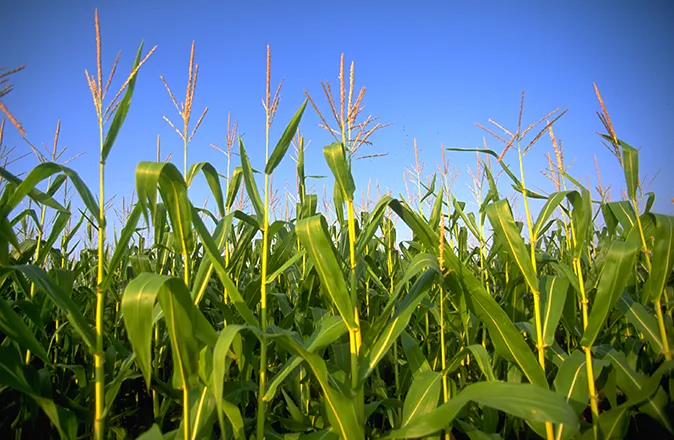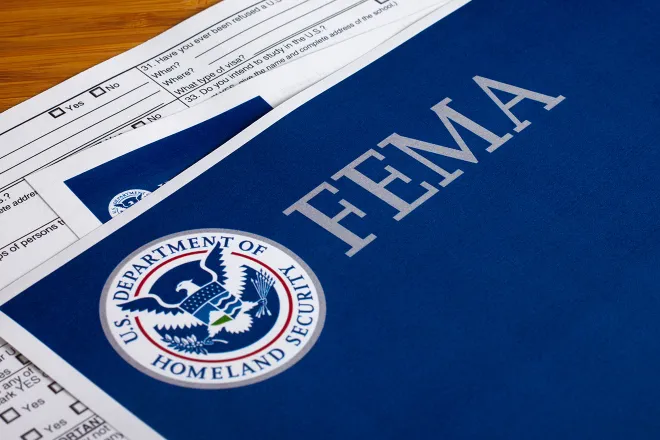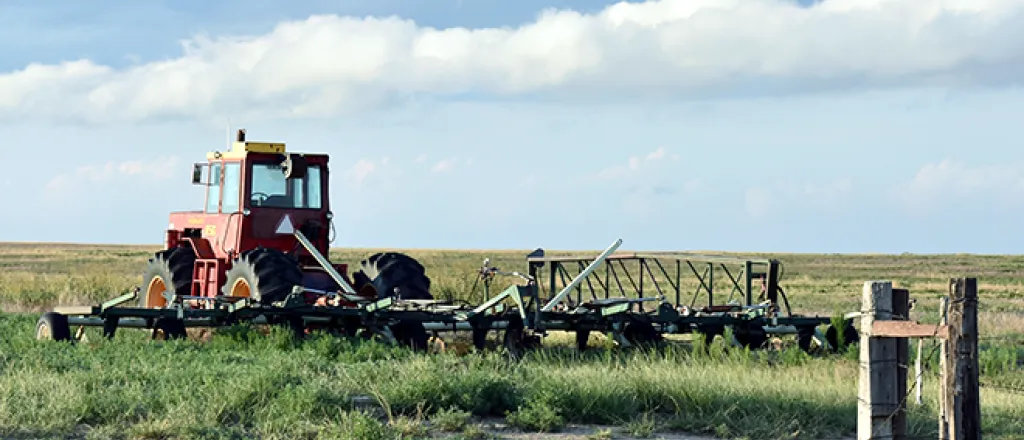
USDA cuts hit small farms as Trump showers billions on big farms
Anna Pesek saw a federal program supporting local food purchases as much more than a boost to her Iowa pork and poultry farm.
The U.S. Department of Agriculture grant program that allowed schools and food banks to buy fresh products from small farms helped her forge new business relationships. It allowed her to spend more with local feed mills and butchers, and was starting to build a stronger supply chain of local foods.
But now that the Trump administration has yanked the funding, she worries that rural economic boost might end too.
“With the razor-thin margins on both sides, those partnerships are just really hard, if not impossible, to sustain,” she said.
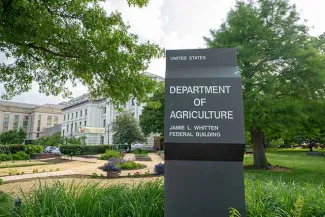
© iStock - Melissa Kopka
The co-owner of Over the Moon Farm, Pesek said her operation was never entirely reliant on the local food programs; it represented about 10 percent of her business. While she knew the federal money wouldn’t last forever, she was planning on the funding lasting through 2028 — but then the Trump administration last month nixed more than $1 billion for local food programs.
The federally funded Local Food Purchase Assistance and the Local Food for Schools programs, both begun during the pandemic, focused on small, local farms in aims of building stronger domestic food supply chains. Grants allowed schools and food banks to buy meat, dairy and produce from small farms — including many healthy products that are often too expensive for those institutions.
USDA’s local food programs specifically aided some of the nation’s most disadvantaged farmers and ranchers, including newcomers, small farmers and those who have faced racial discrimination.
The local food programs were initially funded by 2021’s American Rescue Plan Act but were later expanded by the Biden administration. The Trump administration, though, has cut the funding that went to thousands of small farms, saying that it’s instead “prioritizing stable, proven solutions that deliver lasting impact.”
Pesek noted that the federal government has subsidized commodity agriculture like corn and soybeans for more than a century.
“It’s not a novel idea, right? This is how the relationship between the federal government and farmers has looked,” she said. “And so all this program did was allocate some of the funds to go to different kinds of farmers versus just commodity farmers.”
Just after cutting the local food programs, USDA announced it was expediting $10 billion in direct payments to commodity farmers through the Emergency Commodity Assistance Program, which helps farmers offset high input prices and low sale prices for crops. The White House is reportedly considering billions more in farm subsidies as President Donald Trump escalates global trade wars.

Andy Ollove, food access program director at Fresh Approach, a California nonprofit that works on building a healthier and more resilient food system, said the government’s long-standing farm subsidies flow to some of the nation’s biggest operators. Conversely, the local food programs benefited small farmers and communities directly.
“The economic multiplier to this program just seems way more impactful than the traditional subsidy model of the USDA that the administration is continuing to invest in,” he said. “It’s just a giveaway.”
Fresh Approach has helped administer the food bank program in California. While implementation delays mean farmers won’t lose access to the program as quickly as in other states, he expects elimination of the program to put small farmers out of business across the country.
Some states have launched their own local food programs, but nothing on the scale of the federal investment. That’s left advocates for small farmers, local foods and food banks pushing for reinstatement of the federal program or getting it included in the next round of farm bill negotiations, when Congress outlines a five- or six-year spending plan for the nation’s food policy and agriculture sector.
Ollove expects philanthropists will fund parts of California’s program after federal money is depleted. But it won’t have the same reach.
“I do feel confident that these types of programs will continue in California … sporadically and piecemeal,” he said. “But not in the way that we’re administering it, in a way that I think is changing a lot of things and improving the food system.”
A mixed response from states
The noncompetitive USDA local food grants allowed many new farmers to break into markets. And the aid for food hubs, which link small producers to larger markets, helped farmers distribute products to schools and food banks.
In Wisconsin, for example, more than half of the nearly 300 farmers who benefited from the food bank program were early career farmers, according to state officials.
In Illinois, the state prioritized funds toward socially disadvantaged farmers, such as those who have faced racial or ethnic prejudice.
“Attacking this program was really an attack on Illinois’ most vulnerable, whether it’s a socially disadvantaged farmer or the food recipient,” said Kristi Jones, deputy director of the Illinois Department of Agriculture.
Her department administered the federal food bank program, which helped beginning farmers get their businesses off the ground.
“A lot of these farmers, they’re living their dreams,” she said. “They are living their goals because of this program.”
Illinois had been planning on nearly $15 million from the next round of funding for the food bank program. Jones said farmers already had begun planning and spending on seeds and equipment.
A lot of these farmers, they're living their dreams.
– Kristi Jones, deputy director of the Illinois Department of Agriculture
“You just don’t put something on the ground and have the product the next day,” she said. “ … So that uncertainty was incredibly challenging for farmers who already deal with enough uncertainty.”
Democratic leaders have bashed the Trump administration’s decision: Illinois Governor JB Pritzker, for example, called it “a slap in the face to Illinois farmers and the communities they feed.”
But conservative leaders in other states have downplayed the cuts.
In Texas, Agriculture Commissioner Sid Miller characterized USDA’s decision as “a reassessment.”
He said the state was not dependent on the federal funds and would continue its Farm to School and Farm to Food Bank programs, which encourage the local purchase of Texas agricultural products.
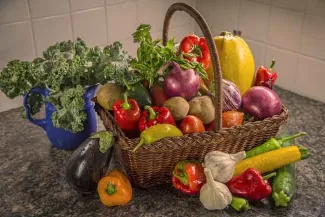
© Pixabay - skeeze
“There’s always room for refinement, and we may see a revised version of the policy down the road that is even better for agriculture producers,” he said in a statement last month.
Texas funds programs to help distribute excess food to schools, food banks and charities. But it does not have a grant program like USDA’s to help those organizations purchase local food, said Marshall Webb, spokesperson for the state agriculture department.
Iowa’s agriculture department recently started its own local food program.
The Choose Iowa program has made about $300,000 available to support local food purchases — though the state lost out on about $11.3 million because of the federal cuts.
Don McDowell, spokesperson for the Iowa Department of Agriculture & Land Stewardship, said the agency would continue to ask lawmakers to expand funding for the Choose Iowa program.
“Programs designed to forge relationships between Iowa farmers, food hubs, food banks and schools are important to our farmers and communities,” he said.
Iowa Farmers Union President Aaron Heley Lehman said his organization, which represents family farmers and ranchers, would like to see the state step in to fill the void.
“But we don’t anticipate that that’s going to be an easy thing for the state of Iowa to do,” he said. “So not only is it local farmers that are feeling like they’ve had the rug pulled out from underneath them, but the state of Iowa has, too.”
Creating a new food system
In Southern California, Dickinson Family Farms has worked to gather produce from dozens of small farms across the region, allowing even the smallest operators without distribution capabilities to sell to local food banks.
Andrew Dickinson, who owns the farm with his father, said the federal local food program also helped reduce food waste. Farmers were able to get fair market prices for vegetables with cosmetic damage or fruits deemed too small or large for grocery store shelves.
Dickinson said the federal program has provided a reliable marketplace for small operators that otherwise depend on more inconsistent sales streams like farmers markets.
“It will create a vacuum,” he said.
About 60 miles east of Los Angeles, sixth-generation farmer Anna Knight said the federal funds were much more than a handout to farmers. To her, they were about creating a new kind of food system.
She said supporting local producers creates more supply chain resilience — something many people didn’t appreciate until the pandemic.
“We don’t want to go back to that world,” she said. “When we invest in our local food system, we’re really investing on onshoring our food production system, on making new food systems local and increasing their resiliency in moments of crisis.”
Old Grove Orange, her California farm, has been supplying citrus to some local school systems for years. But she said the federal funds were the “single biggest changemaker” for pushing schools to buy local for the first time.
To her, that’s key in promoting lifelong healthy eating: Local produce like her freshly picked oranges pack more of a nutritional punch and just taste better than produce that takes weeks to ship from abroad.
“When you are giving a child a delicious piece of fruit, you are really cultivating their palate for life,” she said. “You are setting this expectation of what a fruit is supposed to taste like, and you are sparking this love for fruits and vegetables for the rest of their life.”
Knight said the nation doesn’t have to choose between big and small farms. But small farms are vanishing all around her.
“This is a ticking bomb,” she said. “The clock is running out if we don’t really find a way to help make these small, medium-sized farms sustainable.”


